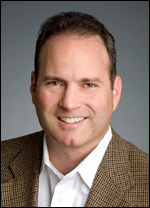Q&A With Peter Horst, SVP of Brand Marketing, Capital One
 This week I had a chance to catch up with Peter Horst, Senior Vice President of Brand Marketing at Capital One, in advance of his keynote later this month at Forrester’s Marketing Forum in LA. Peter will be speaking about how Capital One approached the integration and brand conversion of ING Direct, after the 2011 acquisition of the retail bank. Check out a preview of Peter’s session in the below Q&A, or join me in Los Angeles, April 18-19, to hear Capital One’s full story.
This week I had a chance to catch up with Peter Horst, Senior Vice President of Brand Marketing at Capital One, in advance of his keynote later this month at Forrester’s Marketing Forum in LA. Peter will be speaking about how Capital One approached the integration and brand conversion of ING Direct, after the 2011 acquisition of the retail bank. Check out a preview of Peter’s session in the below Q&A, or join me in Los Angeles, April 18-19, to hear Capital One’s full story.
Q. What was the biggest challenge around the ING Direct integration strategy?
The biggest overall challenge was what we called “protecting the butterfly.” It became obvious to us that the magic of ING Direct did not lie in something as simple as a piece of technology, or a specific body of expertise, or some financial asset. What made ING Direct such a unique franchise was a complete ecosystem whose parts all worked together to create an exceptional customer experience. These parts included a powerful sense of mission, a culture of simplicity, a passion for serving customers, products that were offered straightforward value, a brand voice that was friendly and humorous, and much more. We realized that we had to be very careful not to disturb this ecosystem as we integrated the business, and remained on high alert to any risk that we might be undermining the interaction of the parts. One area in particular that we were very focused on was ensuring that the associates remained engaged and excited for this next leg of their journey.
Q. How did you approach this integration differently from past brand conversions?
A. We started with the presumption that we didn’t know what we didn’t know. We implemented a standard that said we wouldn’t integrate and connect a system or organization or technology until it was ready to meet or exceed ING Direct’s high standard of customer experience. We empowered every ING Direct associate to push an alarm bell if they thought we were crushing the butterfly. One part of the playbook we didn’t change was to begin by going deep on customer sentiment, and staying in close touch with them as the integration progressed. The insights we gleaned really drove our orchestration of the communications and the overall experience.
Q. How do you continue to assure customers that Capital One is a big bank that understands all of its customers' needs?
A. One key to making sure that customers (and associates) know that we are committed to keeping that special flame alive is in preserving ING Direct’s unique brand voice. We remain very careful to maintain that same friendly, unbanky tone in absolutely every communication. Customers spontaneously remarked that they were encouraged to see that voice continue. We also are every bit as committed to the mission of helping customers save — this is particularly critical to our associates. Finally, we stay very engaged on the social front, interacting and responding across many channels. Throughout the transition we had our senior business leaders working the social channels, the phones, and even gave out their personal email addresses in an effort to stay close to our customers, and we will continue the high-touch and accessible leadership approach.
Hear more from Peter Horst at Forrester's Forum For Marketing Leaders, April 18-19 in Los Angeles. Or join us in London, May 21-22 at the Forrester Forum For Marketing Leaders EMEA for more insight on creating brand advantage with perpetually connected customers.